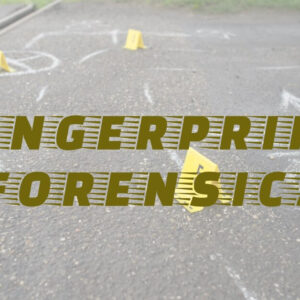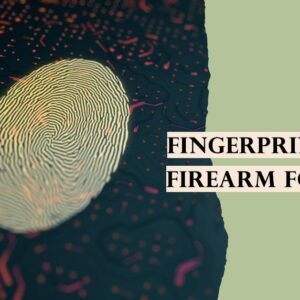Identical twins, who share the same genetic makeup, often have nearly identical fingerprints due to developing from the same fertilized egg. This poses a challenge for forensic experts as traditional fingerprint analysis methods may not be sufficient to differentiate between them.
Let’s delve into the complexities of fingerprinting twins and how scientists are striving to address these obstacles. By gaining insight into these challenges, we can enhance our ability to distinguish between the fingerprints of identical twins and enhance forensic practices for the benefit of all.
Understanding Twin Types
Twins, fascinating in their dual nature, fall into two main categories: identical (monozygotic) and fraternal (dizygotic). These categories explain the origins and genetic composition of twins, shedding light on their distinct traits and the difficulties they present in fingerprint identification.
Identical twins, also known as monozygotic twins, come from a single fertilized egg that divides into two separate embryos early on. This division leads to individuals who have nearly identical genetic material, essentially making them genetic duplicates. From their looks to their genetic tendencies, identical twins often look strikingly similar, even down to their fingerprints. The resemblance in their genetic makeup is evident in almost identical ridge patterns on their fingertips, creating a significant challenge in the field of forensic identification.
In contrast, fraternal twins, or dizygotic twins, result from the simultaneous fertilization of two distinct eggs by two separate sperm cells. Essentially, fraternal twins are siblings conceived and born at the same time. Unlike identical twins, fraternal twins do not share more genetic similarities than any other pair of siblings. Their genetic composition is as varied as that of non-twin siblings, leading to differences in physical appearance, personality traits, and, importantly, fingerprint patterns.
Recognizing the difference between these types of twins is crucial in understanding the complexities involved in fingerprinting twins, especially identical twins. While fraternal twins may exhibit similarities similar to siblings, it is the genetic mirroring of identical twins that presents a significant challenge in forensic science.
Exploring the intricacies of twin types highlights the need for customized approaches in fingerprint analysis, as well as the importance of innovative methods to differentiate between the nearly identical fingerprints of identical twins accurately.
Challenges in Differentiating Twins Using Fingerprints
1. Lack of Discrimination
Conventional fingerprint analysis depends on the distinctiveness of ridge patterns, called minutiae, to identify individuals. Nevertheless, when it comes to identical twins, the quantity and layout of minutiae can be remarkably similar, posing a challenge in distinguishing their fingerprints.
2. Genetic Influence
Research has indicated that genetics have a substantial impact on the formation of fingerprint patterns. When it comes to identical twins, they possess the same genetic makeup, resulting in comparable ridge patterns. Although slight differences may arise due to environmental influences, fundamental genetic similarity remains a significant factor.
3. Environmental Factors
Genetics are a major factor in fingerprint development, but things like how a baby is positioned in the womb and their movements can also have an impact. Despite this, the differences in fingerprints between identical twins might not be significant enough to distinguish them reliably.
4. Age and Lifestyle
As time passes, fingerprints may alter because of aging, scarring, and physical work. Although these alterations can be useful in identifying people, they might not be enough to accurately tell apart identical twins, especially when they are young and have limited exposure to different environments.
5. Advanced Technologies
Even with obstacles, technological progress like high-resolution fingerprint scanning and automated fingerprint recognition systems provide exciting opportunities to enhance the distinction between identical twins’ fingerprints. By examining the intricate details of the fingerprint ridge patterns, these advancements may uncover subtle variations that are undetectable to the naked eye.
Mitigation Strategies
1. Multimodal Strategies
Mixing fingerprint analysis with additional biometric methods like iris recognition or facial recognition can improve identification accuracy, especially in situations with identical twins. By merging various biometric data sources, law enforcement and forensic professionals can develop a more detailed individual profile, decreasing the chances of mistaken identity.
2. DNA Analysis
When traditional fingerprint analysis is unable to differentiate between twins, DNA analysis becomes essential for accurate identification. Although DNA analysis may be more intrusive and time-intensive compared to fingerprinting, it provides unmatched precision in determining genetic connections.
By examining the DNA profiles of twins, forensic specialists can definitively confirm unique identities, surpassing the challenges presented by identical fingerprints.
3. Longitudinal Analysis
Tracking changes in fingerprints over time, particularly during important stages of growth like adolescence, can be valuable in detecting subtle differences between the fingerprints of identical twins. By carrying out long-term studies that observe how fingerprints evolve from infancy to adulthood, scientists can pinpoint distinct features or patterns that set apart the prints of twins.
This method is based on the recognition that environmental influences and developmental processes can introduce variations in the shape and structure of fingerprints as time goes by.
4. Enhanced Imaging Technologies
Breakthroughs in imaging technologies, like cutting-edge fingerprint scanners and advanced 3D imaging systems, provide exciting opportunities to enhance the distinction between identical twins’ fingerprints. These tools can detect even the smallest variations in ridge patterns, enabling forensic specialists to pinpoint subtle differences that might go unnoticed by people.
With the use of state-of-the-art imaging methods, law enforcement can improve their accuracy in identifying individuals, even when dealing with identical twins, by analyzing their fingerprints.
Conclusion
Identifying identical twins through fingerprinting poses a significant challenge in forensic science because of their extremely similar genetic composition. Traditional fingerprint analysis often struggles to distinguish between their prints, but with the help of technological advancements and other biometric methods, there is hope for more accurate solutions.
Interdisciplinary collaboration and constant innovation are crucial in overcoming the obstacles presented by identical twins’ fingerprints in forensic identification. As forensic science progresses, the quest for precise and dependable identification methods for identical twins will continue to be a priority.






